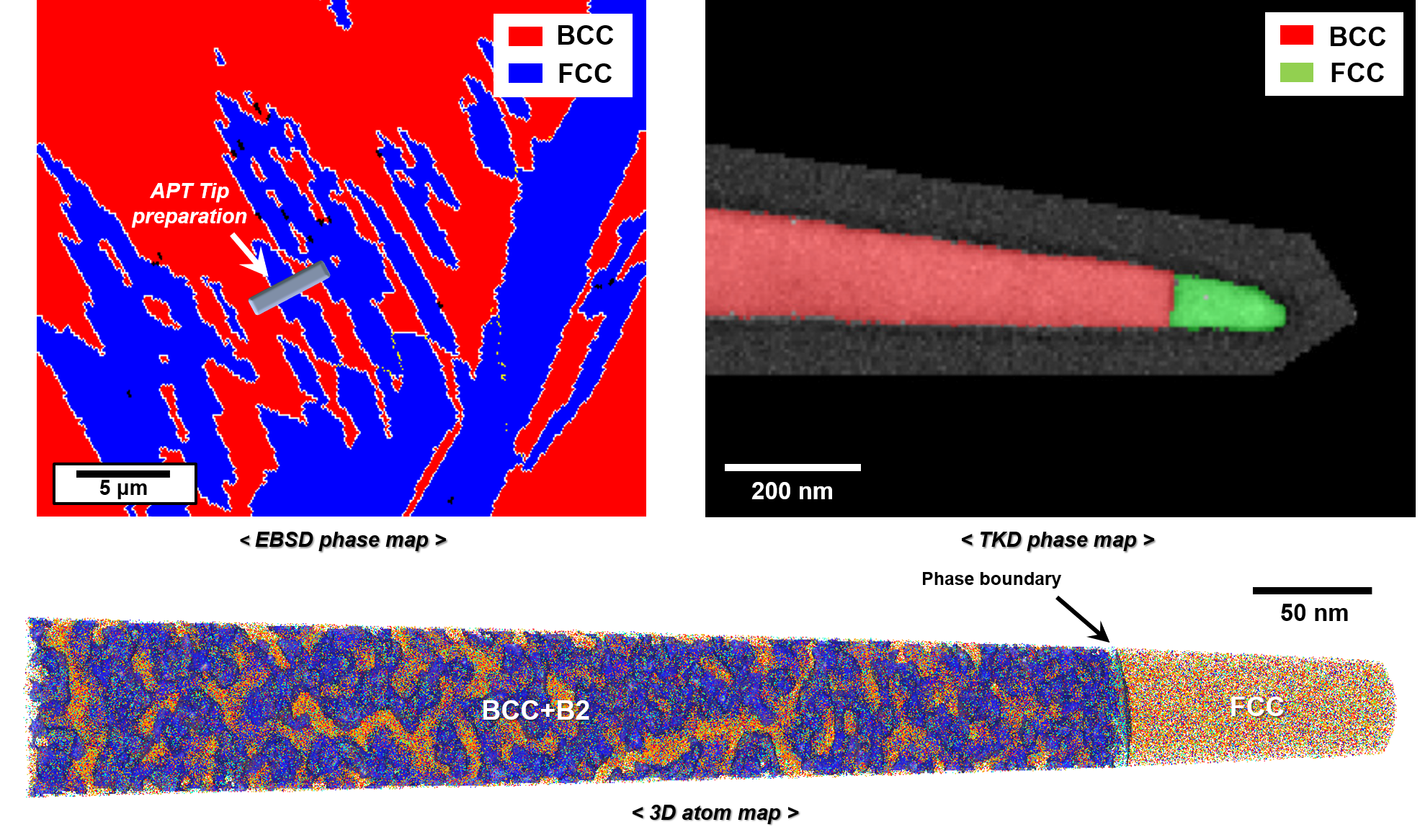Advanced Characterization
Advanced Characterization
Atom Probe Tomography

Application of state-of-the-art characterization
techniques will be a central part of our research. We particularly apply Atom Probe Tomography (APT) as a
powerful nano-analytical tool for characterizing complex materials. The principle of APT is based on the
controlled field evaporation and ionization of surface atoms from a fine needle-shaped emitter (radius of
curvature typically below 100 nm). The field evaporated ions are accelerated towards a position-sensitive
detector that records their time-of-flight and impact positions. A three-dimensional elemental map is
reconstructed from the raw data, using a back projection algorithm. The great advantage of APT is its high
spatial resolution (near-atomic) and high chemical sensitivity (ppm level), making it an ideal tool for
studying local phase transformations and nano-scale chemical fluctuations in complex engineering
alloys.
Correlative microscopy
Although APT even yields structural information for
specific materials such as pure metals, dilute solid solutions, and highly ordered inter metallic phases,
structural information cannot alway be accessed with this technique. To acquire both chemical and structural
information, other methods need to be applied in conjunction with APT. Experimental techniques, which are
particularly powerful in this respect, are transmission (TEM) and scanning electron microscopy (SEM),
electron back scatter diffraction (EBSD) and electron channeling contrast imaging (ECCI). In combination
with focused-ion-beam (FIB) milling it is nowadays possible to select and jointly analyze specific regions
of interest of the sample (such as grain and phase boundaries) with these techniques.

(C. Jung, K. Kang, A. Marshal, K. G. Pradeep, J.
Seol, H. M. Lee, P. Choi, Acta Materialia, 171 (2019) 1)
The figures above show an example of correlative
EBSD, TKD, and APT analyses of a softmagnetic high-entropy alloy. Distinct elemental
partitioning at existing phase boundaries can be resolved, which significantly affects the
saturation magnetization and coercivity of this system.
